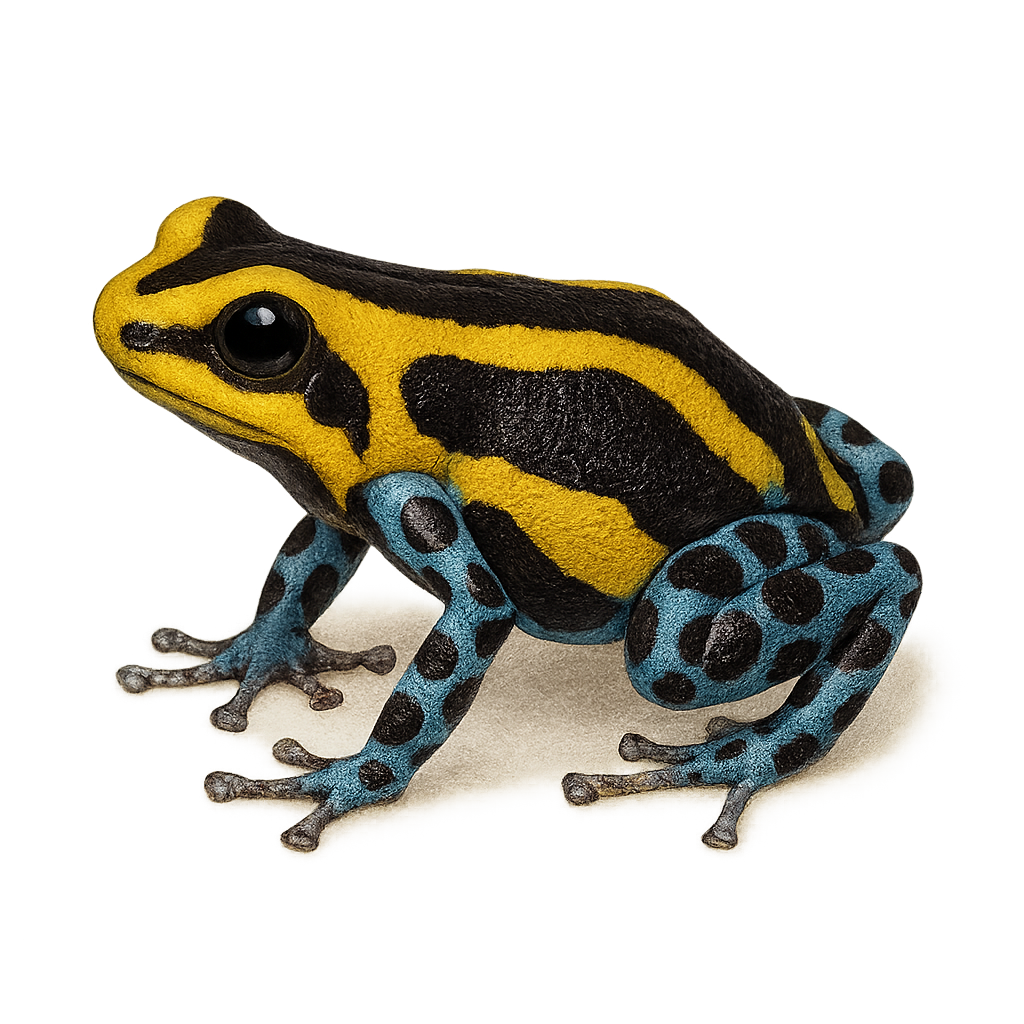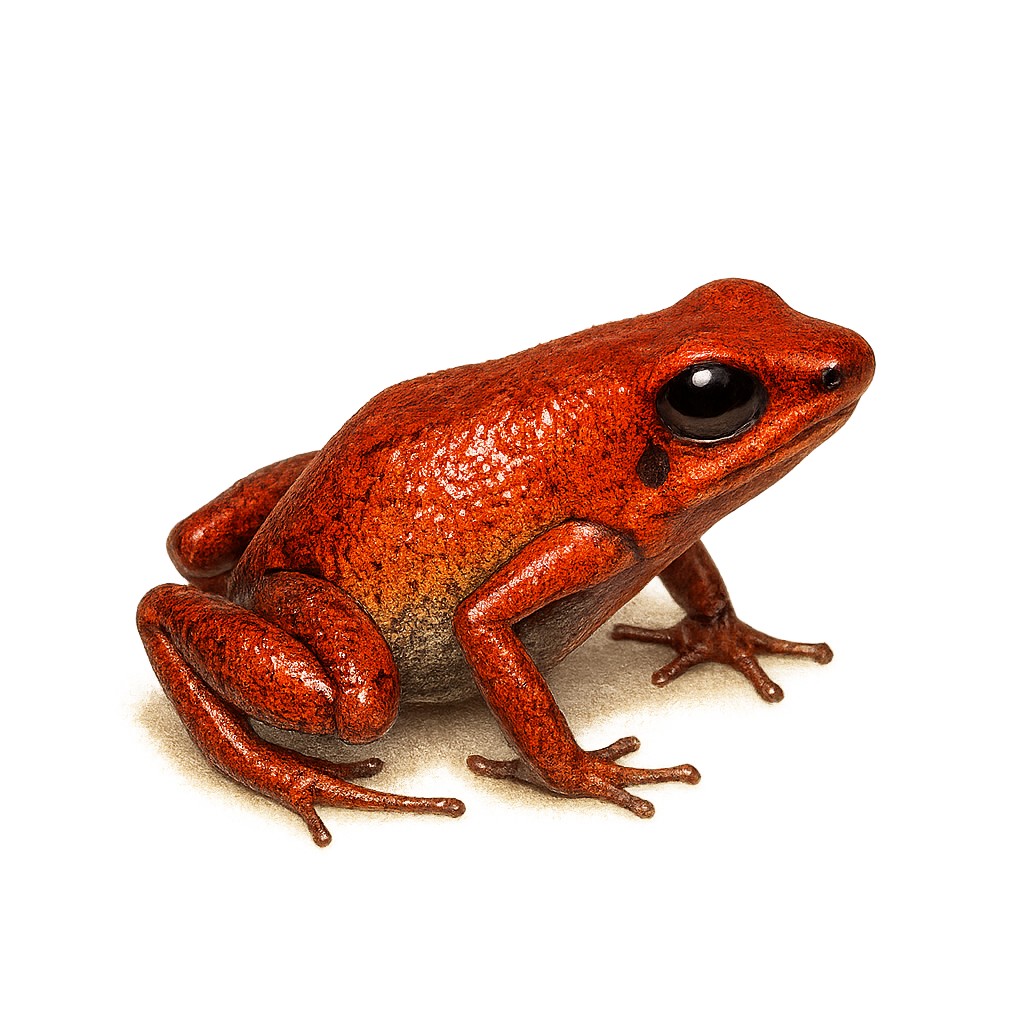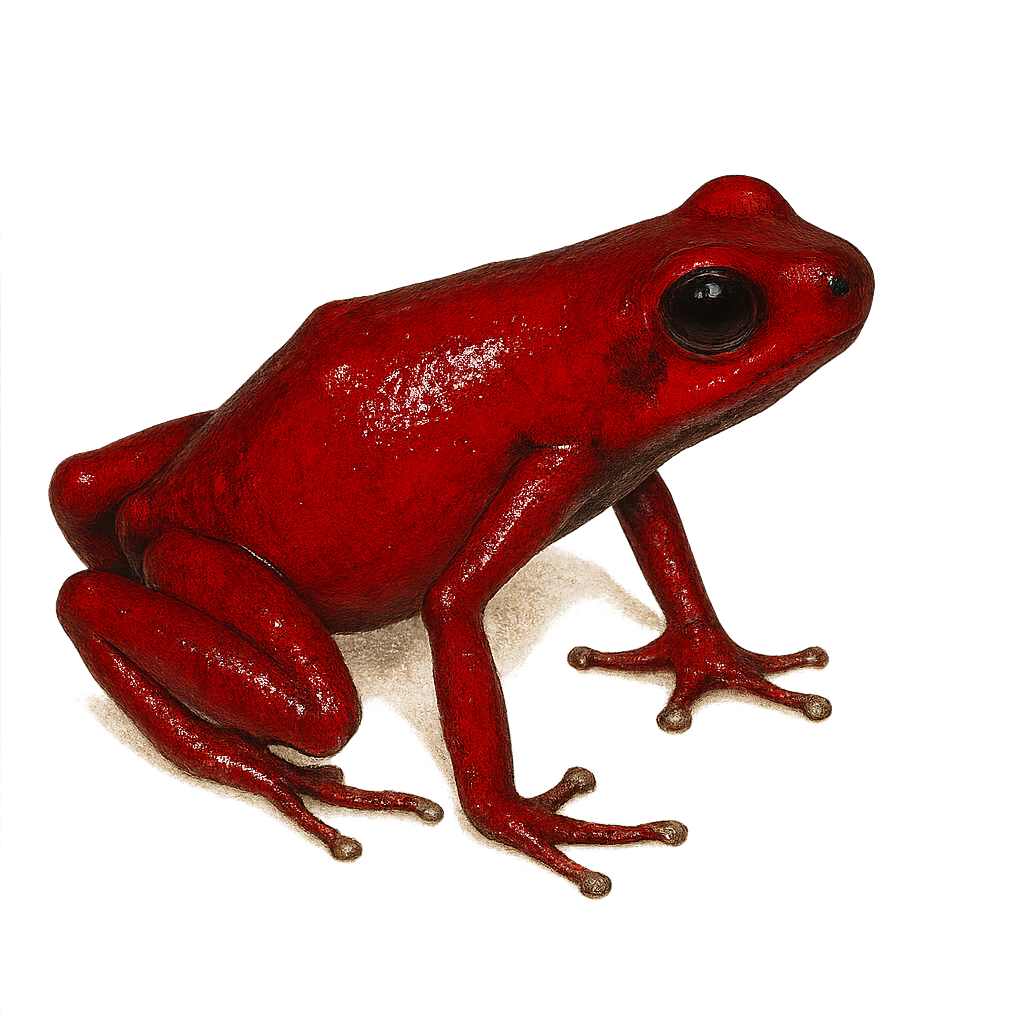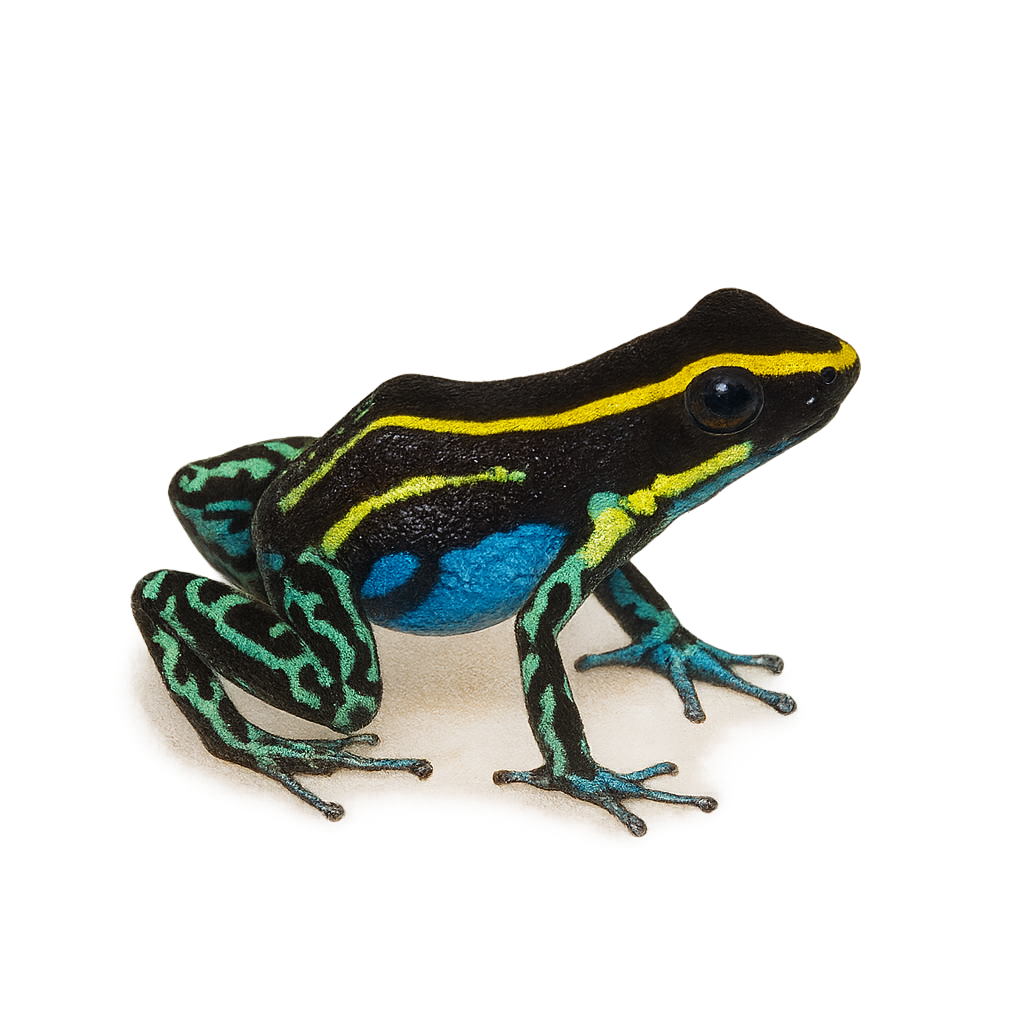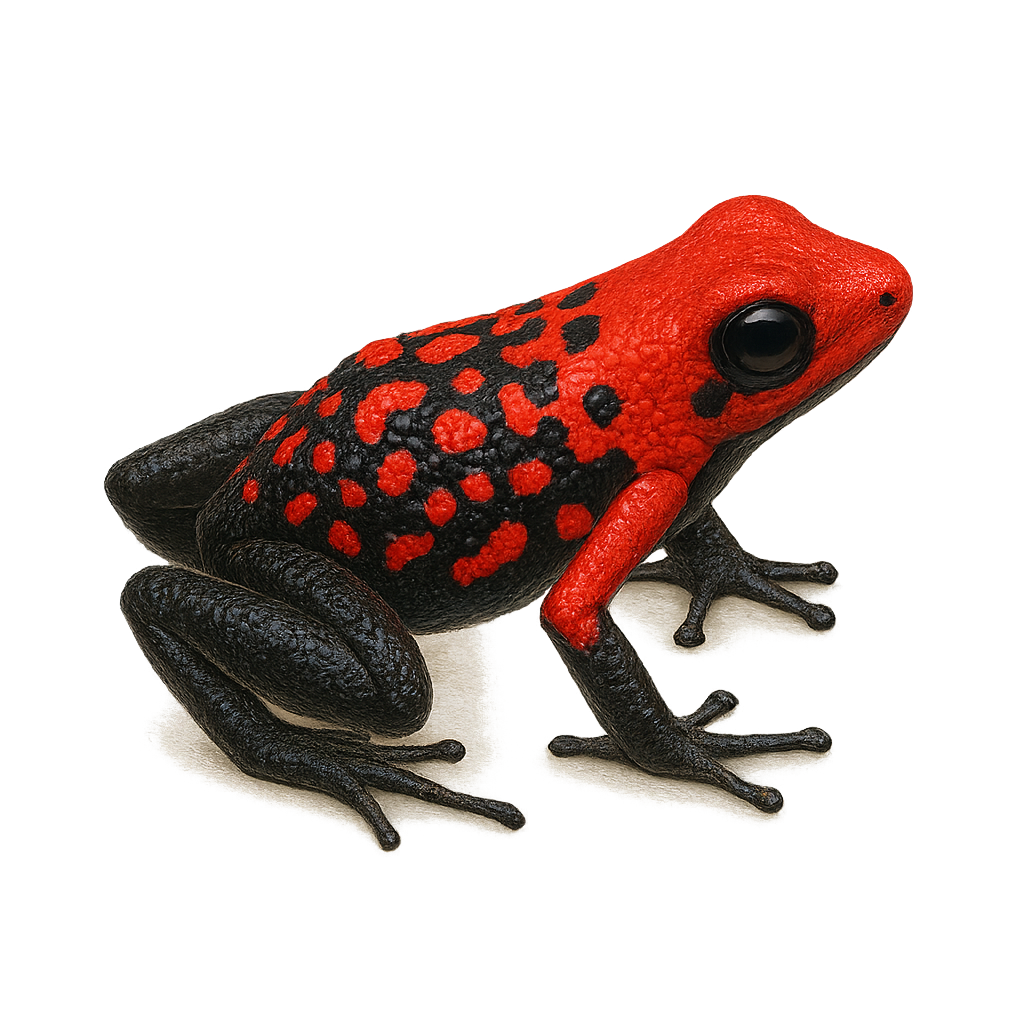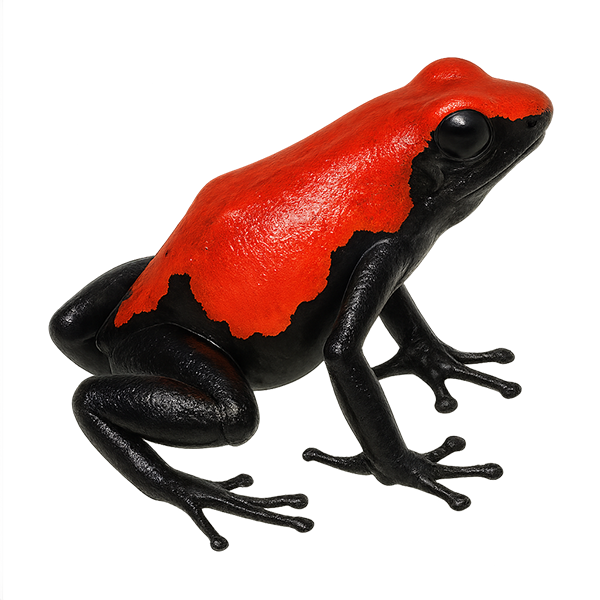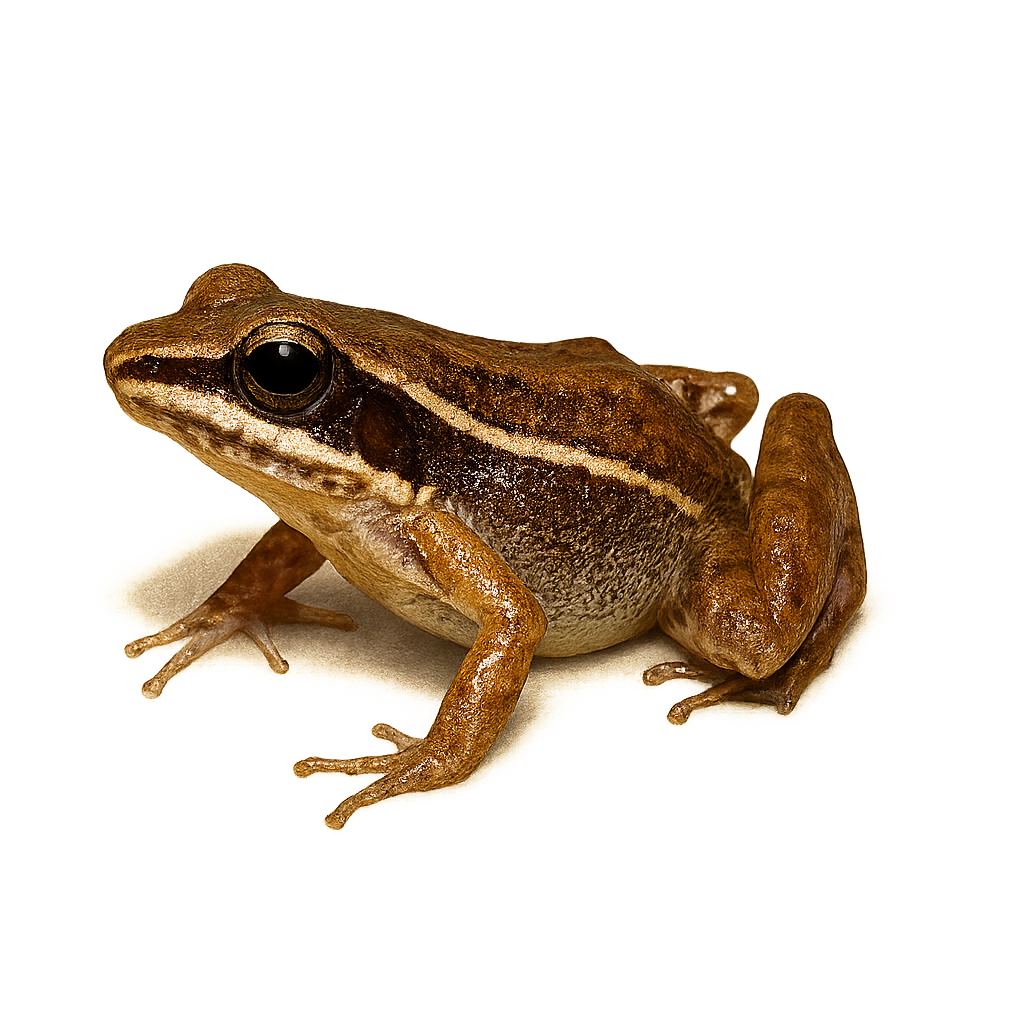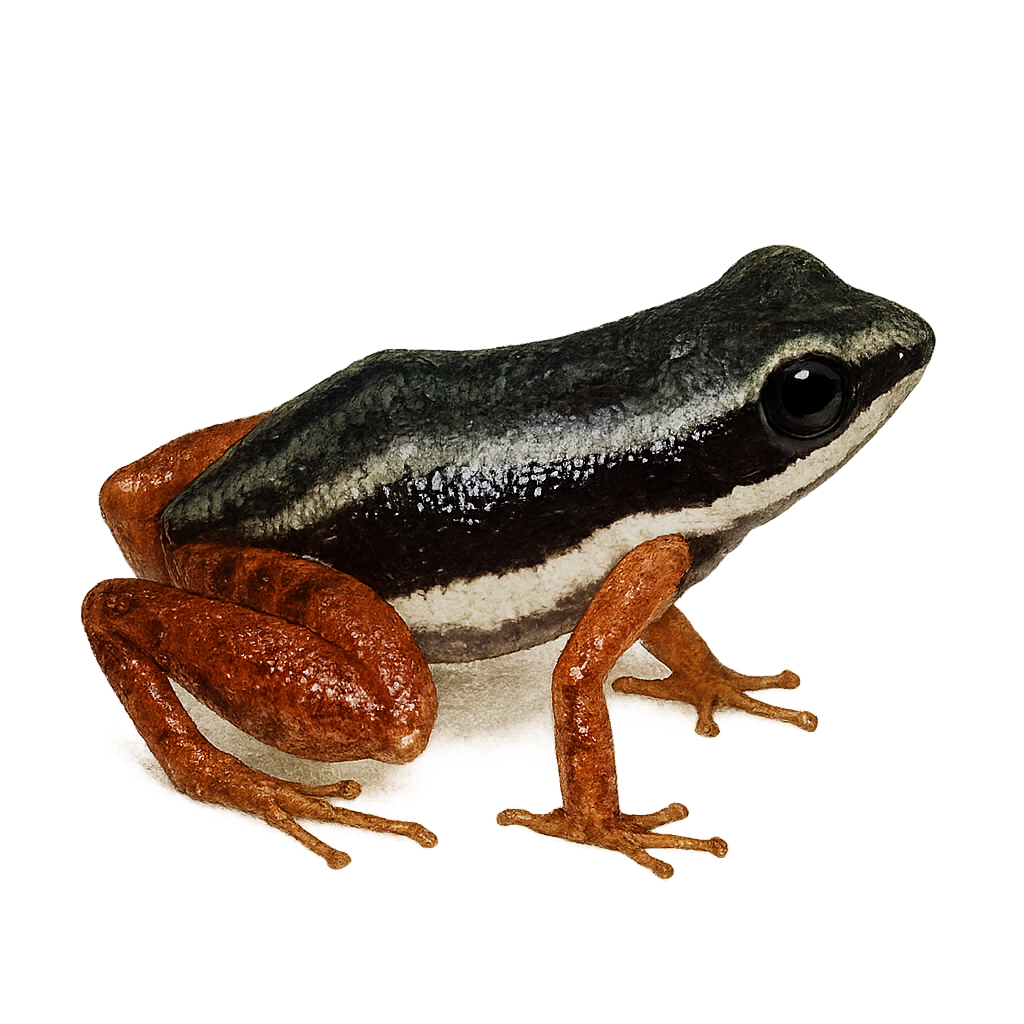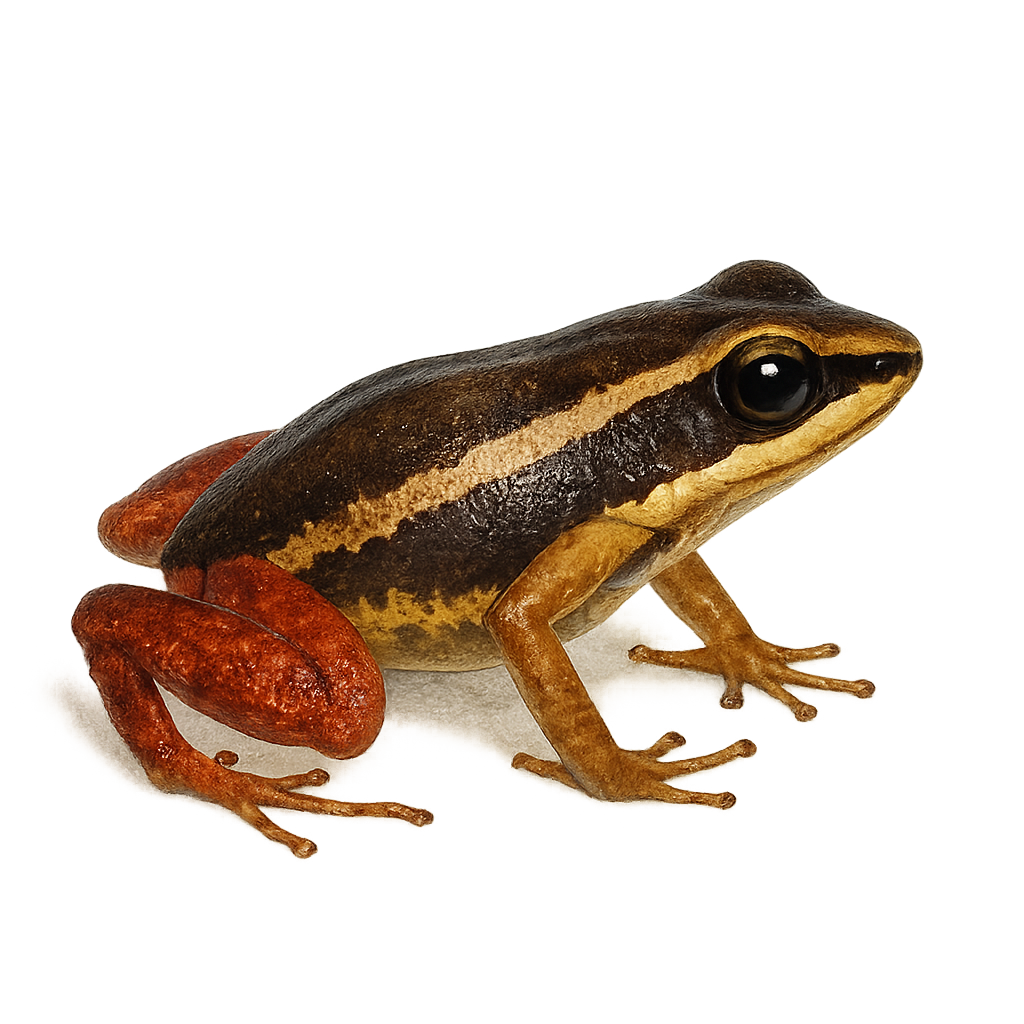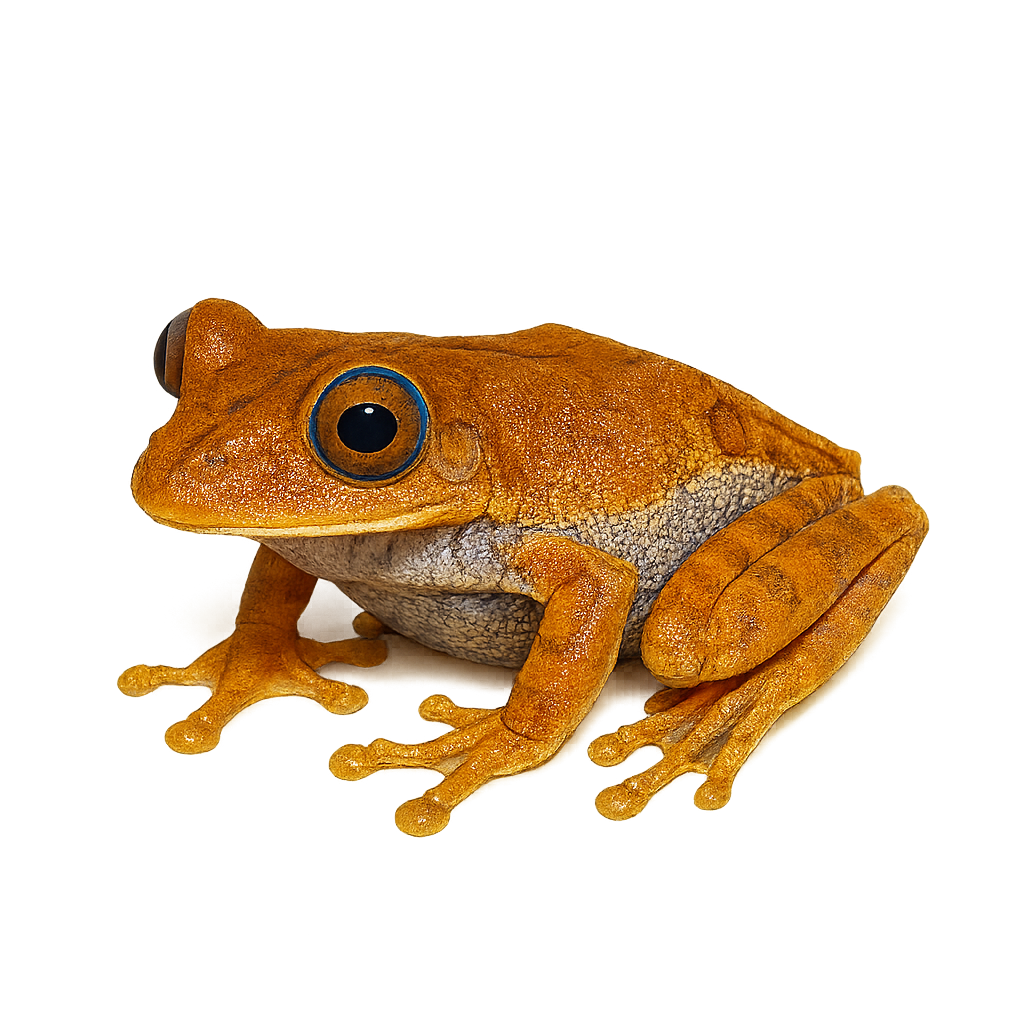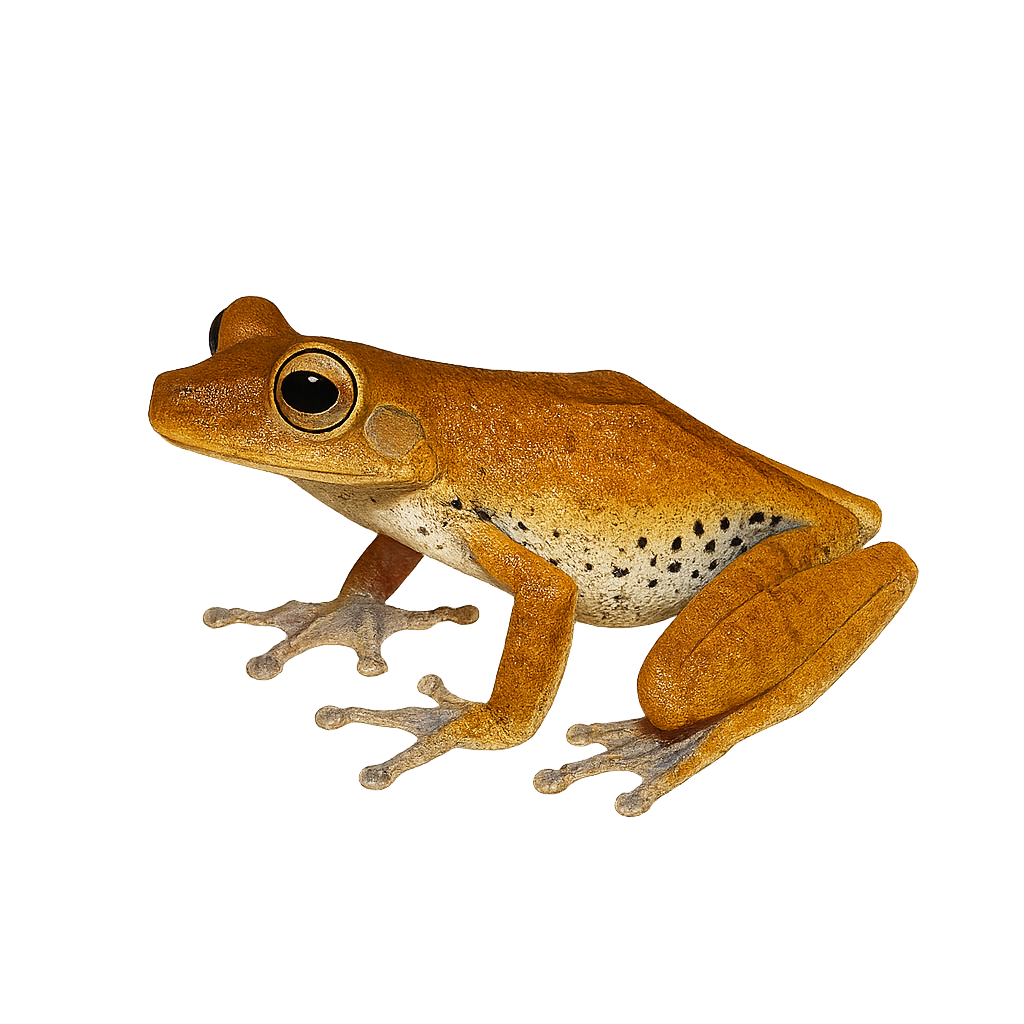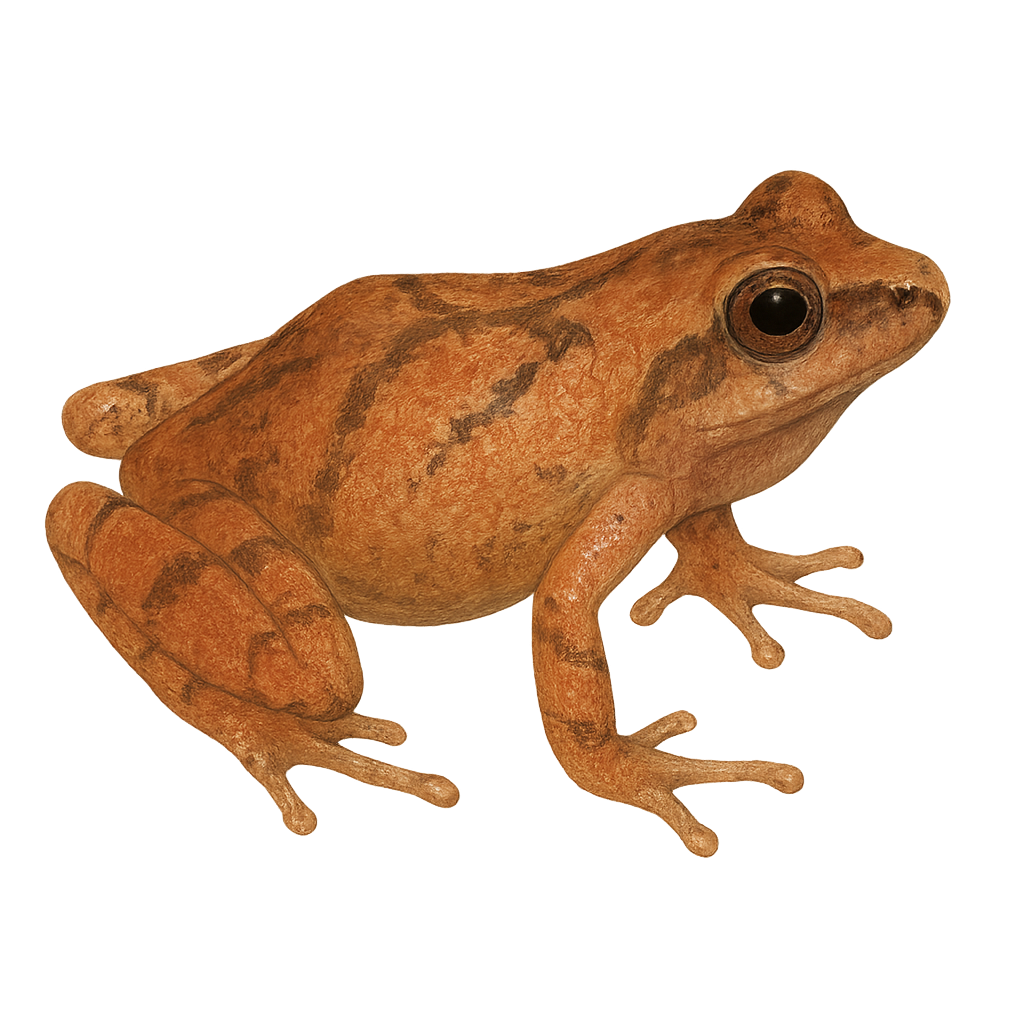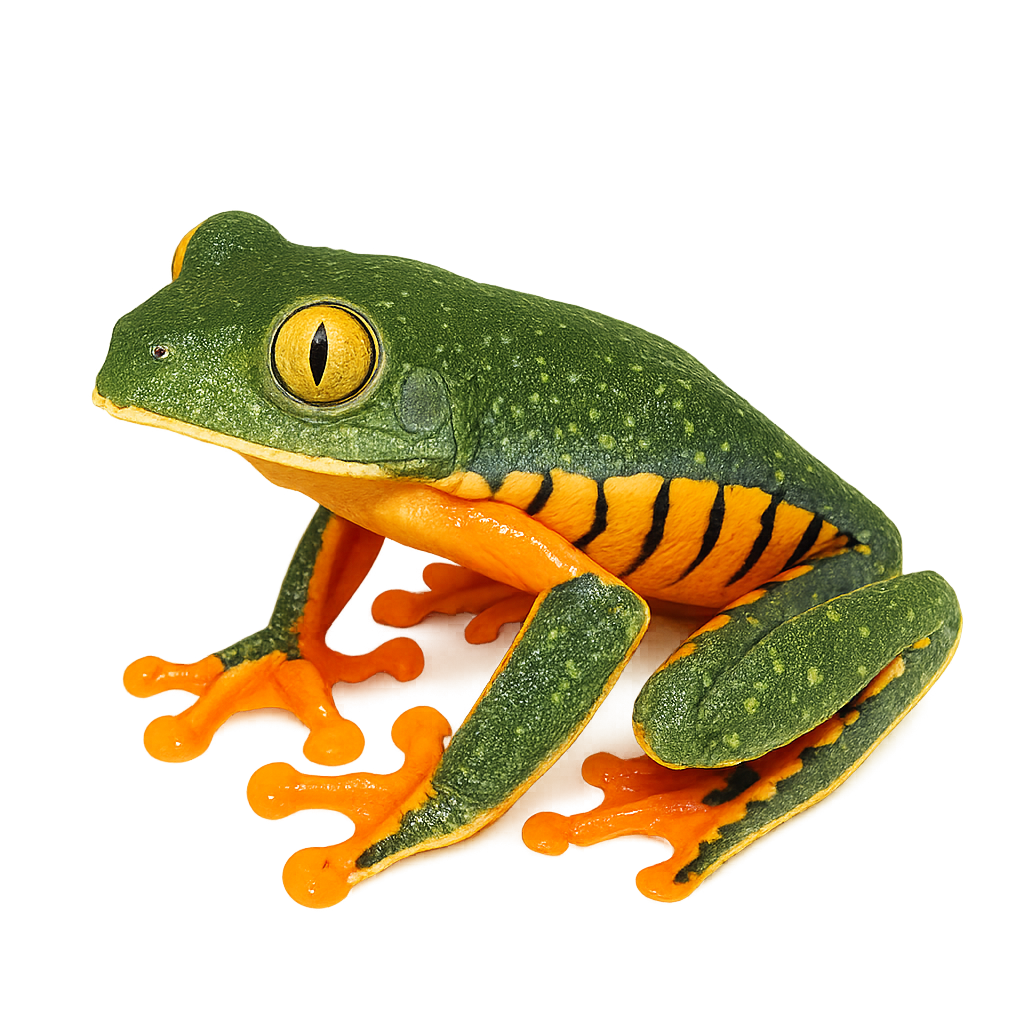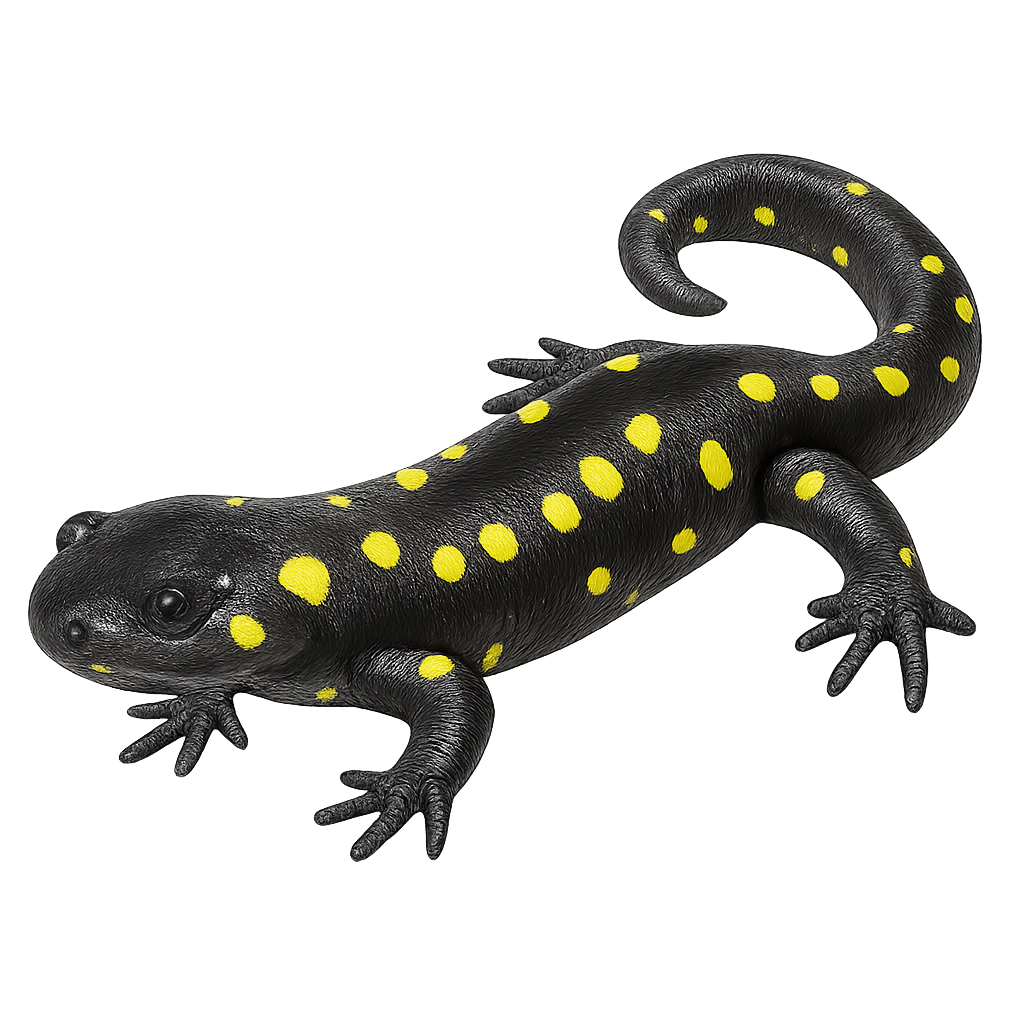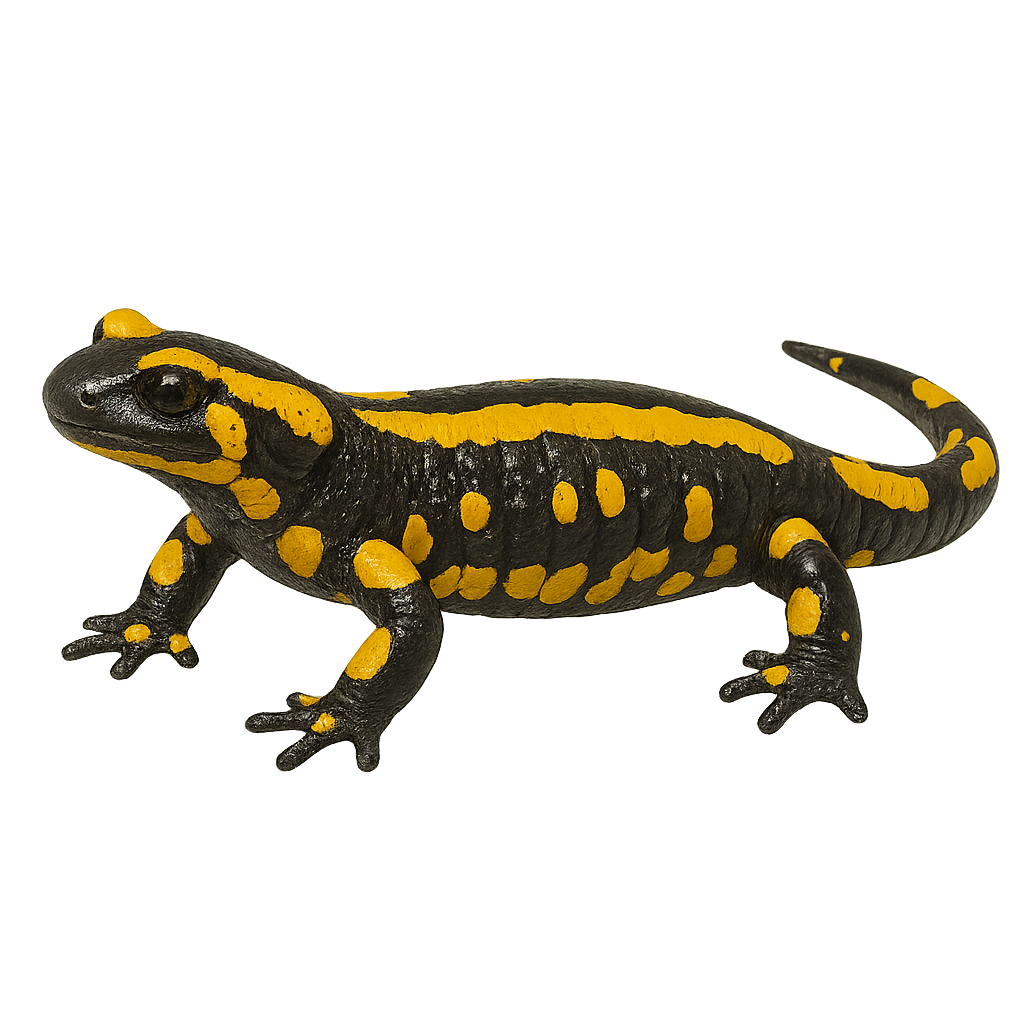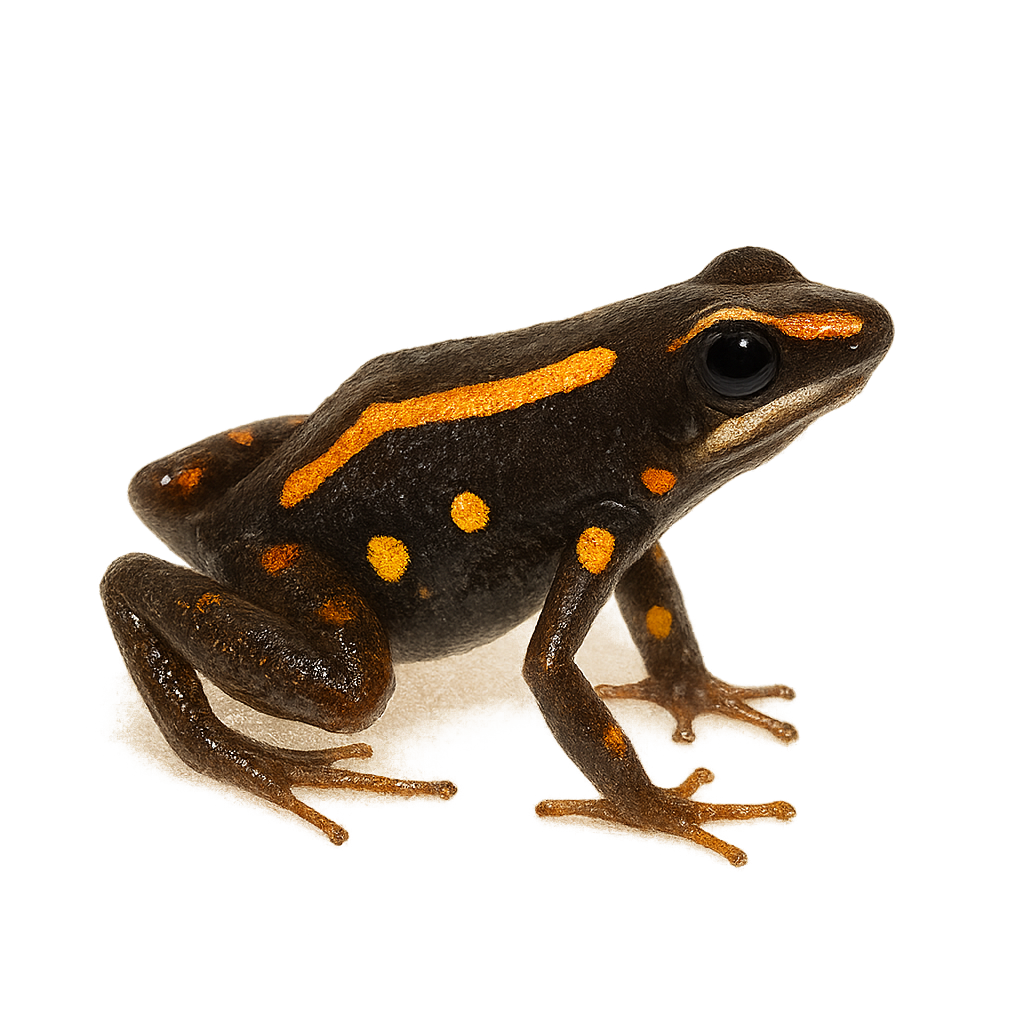The Rhinella margaritifera, commonly known as the South American Common Toad, is a species of toad found primarily in the humid tropical forests of South America. This toad is distinguished by its rough skin and pearly patterns, which allow it to blend effectively into its natural environment. It is generally brown with darker spots, providing excellent protection against predators. The South American Common Toad is nocturnal, spending the day hidden under leaves or in burrows. It primarily feeds on insects and other small invertebrates. Although its habitat is threatened by deforestation, it is currently classified as of least concern by the IUCN.
The Sira Poison Frog, or Ranitomeya lamasi, is a small, brightly colored frog native to the humid tropical forests of Peru. It is distinguished by its striking patterns of bright colors, often a combination of black, yellow, and blue, which serve as a warning to potential predators of its toxicity. This species is typically found in lowland areas, where it inhabits leaf litter and areas near water bodies. Lamasi Poison Frogs are known for their territorial behavior and diurnal lifestyle. They primarily feed on small insects and other arthropods. Their reproduction involves parental care, with eggs laid on the ground and tadpoles transported on the backs of adults to water points.
The Sirena Poison Frog, Ranitomeya sirensis, is a small, brightly colored frog native to the humid tropical forests of Peru. Known for its vivid colors, which range from blue to black with yellow or red patterns, it serves as a warning to potential predators of its toxicity. Measuring about 2 cm in length, this species is diurnal and primarily feeds on small insects. It inhabits lowland areas, often near water bodies. Its skin secretes toxic alkaloids, used by local populations to poison arrows. Although its population is stable, it is threatened by deforestation and the illegal exotic pet trade.
The Steyermark's Poison Frog is a small, brightly colored frog endemic to the tropical forests of Venezuela. It is characterized by its vivid skin, often red or orange with black spots, which serves as a warning to potential predators due to its potent toxins. Measuring about 2 cm, it is primarily terrestrial and feeds on small insects. Its natural habitat is threatened by deforestation, making it a vulnerable species. It plays a crucial role in the ecosystem by controlling insect populations. Its reproduction is complex, involving parental care where tadpoles are transported on the adults' backs to water bodies.
The Summers' Poison Frog, or Ranitomeya summersi, is a small, brightly colored frog native to the tropical forests of Peru. It is known for its vivid colors, ranging from blue to black with yellow or orange patterns. This species is often found in humid areas and dense forests, where it hides under leaves and debris. It is diurnal and spends most of its time foraging for food, primarily insects. Due to its small size, it is vulnerable to predators, but its bright colors serve as a warning of its toxicity. Conservation of its natural habitat is crucial for its survival, as deforestation threatens its populations.

The Strawberry Poison Dart Frog is a small, vibrant, and colorful frog from the Dendrobatidae family. This species typically measures between 2 and 3 centimeters in length and is easily recognizable by its bright red or orange color, sometimes speckled with blue or black, hence its name "strawberry." It is primarily found in the humid tropical forests of Central America, particularly in Costa Rica and Panama. Its diet mainly consists of ants, spiders, and other small arthropods, which it primarily captures from the forest floor. The bright coloration of its skin is an indicator of its toxicity, which comes from alkaloids found in its diet, particularly ants. These toxins serve as protection against predators. During the breeding season, the Strawberry Poison Dart Frog lays its eggs on the forest floor or in humid areas where the tadpoles develop, often in small pools of water or tiny puddles. While this species is not in immediate danger, it is threatened by deforestation, habitat loss, and pollution.
The Splendid Poison Frog, Oophaga speciosa, is a tree-dwelling frog species known for its vibrant and toxic skin. Native to the humid rainforests of Central America, it is distinguished by its bright colors ranging from vivid red to deep blue, a warning to predators of its toxicity. This frog typically measures between 2 and 4 cm in length. It primarily feeds on small insects and arthropods. Males are territorial and use vocal calls to attract females and deter rivals. Reproduction involves parental care, with eggs laid on the forest floor and tadpoles transported on the adults' backs to water bodies.
The Sky‑blue poison frog, Hyloxalus azureiventris, is a small, brightly colored frog native to the humid tropical forests of Peru. It is characterized by its vivid coloration, with a brown back and a striking blue belly, allowing it to blend in with fallen leaves and streams. Measuring about 2 to 3 cm, it is primarily terrestrial and feeds on small insects. This species is known for its territorial behavior, with males actively defending their territory against intruders. The Blue-bellied Poison Frog plays a crucial role in the ecosystem by regulating insect populations and serving as prey for many predators.
The Ameerega silverstonei, commonly known as Silverstone's Poison Frog, is a captivating species from the Dendrobatidae family. It is renowned for its vibrant colors, typically a mix of blue and black with distinctive patterns, which serve as a warning to potential predators of its toxicity. Native to the humid tropical forests of Peru, this frog prefers habitats rich in vegetation where it can hide and feed on insects. It is diurnal, meaning it is active during the day. Although its conservation status is not critical, deforestation and habitat loss pose potential threats to its survival.
The Splash-backed Poison Frog, Adelphobates galactonotus, is a small, brightly colored frog native to the humid tropical forests of Brazil. Known for its striking skin, which can range from yellow to bright red, it serves as a warning to potential predators of its toxicity. This species typically measures between 3 and 4 cm in length. It primarily inhabits the forest floor but can also climb low vegetation. Its diet mainly consists of small insects and other invertebrates. Although its population is currently stable, it is threatened by deforestation and habitat loss.
Leucostethus fraterdanieli is a small, colorful frog native to the humid tropical forests of Colombia. It is distinguished by its smooth skin and vibrant color patterns ranging from green to brown, often speckled with black spots. This species is typically found near water bodies, where it primarily feeds on insects. Despite its small size, it plays a crucial role in the ecosystem by regulating insect populations. Its reproduction is aquatic, with eggs laid in water where tadpoles develop. Deforestation and water pollution threaten its natural habitat, making it a vulnerable species.
The Silverstone's Diminutive Frog, scientifically known as Silverstoneia minutissima, is a tiny frog species endemic to the humid tropical forests of Central America. Notable for its diminutive size, it often measures less than 2 cm in length. Its coloration ranges from brown to green, with distinctive patterns that allow it to blend seamlessly into the leaf litter of the forest floor. This frog is primarily terrestrial and feeds on small insects and other invertebrates, playing a crucial role in regulating insect populations within its ecosystem. Despite its elusive nature, it is vulnerable to habitat disturbances, particularly deforestation and climate change.
The Silverstoneia erasmios is a small, colorful frog endemic to the humid tropical forests of Central America. It is characterized by its smooth skin and vibrant patterns ranging from brown to green with hints of yellow. Typically measuring between 2 and 3 cm, it is often found near streams where it breeds. Its discreet call is an indicator of its presence. Although its habitat is threatened by deforestation, it remains relatively abundant in protected areas. This species plays a crucial role in the ecosystem by regulating insect populations.
The Boana semilineata, commonly known as the Semilineated tree frog, is a species of arboreal frog found primarily in the humid tropical forests of South America. It is recognizable by its bright green coloration, often adorned with darker lines or patterns, allowing it to effectively camouflage among the leaves. This species is mainly nocturnal, hiding during the day to avoid predators. It primarily feeds on insects, which it captures with its sticky tongue. The striped tree frog plays an important role in the ecosystem by regulating insect populations. Although its population is stable, it is threatened by deforestation and the loss of its natural habitat.
The Stained Treefrog, commonly known as the spotted tree frog, is a fascinating species from the Hylidae family. It is distinguished by its spotted skin, which allows it to blend effectively into its natural environment. This frog is primarily nocturnal, meaning it is active at night for feeding and breeding. It typically inhabits tropical rainforests, swamps, and riparian zones, where it finds both food and protection. Its ability to blend into the surroundings is impressive, and it uses this skill to evade predators. Although its conservation status is not alarming, it is crucial to protect its habitat to ensure its long-term survival.
The Spring Peeper, or Pseudacris crucifer, is a small tree frog native to North America, known for its distinctive call that heralds the arrival of spring. Typically measuring between 2 and 4 cm, it is characterized by a dark X-shaped mark on its back, which gives it its scientific name. It primarily inhabits wetlands, forests, and meadows. Although difficult to spot due to its small size and camouflaging color, its powerful and melodious call is often heard during spring evenings. The Spring Peeper plays a crucial role in the ecosystem by regulating insect populations.
Cruziohyla sylviae, commonly known as Sylvia's Tree Frog, is a strikingly beautiful species of tree frog native to the humid rainforests of Central America. It is characterized by its vibrant green skin adorned with blue and yellow spots, providing excellent camouflage among the foliage. This nocturnal species spends its days resting on tree leaves and plays a crucial role in the ecosystem by controlling insect populations. Sylvia's Tree Frog is also an important indicator of environmental health, as it is sensitive to habitat changes. Conservation efforts are vital to preserve this species and maintain the ecological balance of tropical forests.
The Smith Frog, or Boana faber, is a species of arboreal frog found primarily in the humid tropical forests of South America. It is recognizable by its smooth skin and coloration ranging from brown to olive green, often with darker patterns. This frog is known for its nest-building behavior, from which it derives its name. It uses its hind legs to dig shallow pools in the ground, where it lays its eggs. These pools fill with rainwater, providing a protected environment for the development of tadpoles. The Maçon's Tree Frog is primarily nocturnal, making it difficult to observe during the day. It plays a crucial role in the ecosystem as an insect predator and in the food chain.
Cruziohyla calcarifer, known as the splendid leaf frog, is a captivating species within the Hylidae family. It is distinguished by its vibrant coloration, featuring an emerald green back speckled with yellow spots and flanks adorned with blue and black patterns. This frog also boasts prominent eyes and webbed feet, adapted to its arboreal lifestyle. It primarily inhabits the humid tropical forests of Central America, where it skillfully camouflages among the leaves. Nocturnal, it feeds on insects and other small invertebrates. Although its habitat is threatened by deforestation, it is currently classified as "Least Concern" by the IUCN.
The spotted salamander is an urodele amphibian, 15–25 cm long, with a jet-black back marked by bright yellow spots. It inhabits humid deciduous forests and migrates by night to ephemeral pools in early spring to breed.
The Spotted Salamander is an amphibian primarily found in forests and wetlands across Europe, particularly in France, Spain, and Germany. It typically measures between 15 and 25 cm in length, although some specimens can reach up to 30 cm. Its body is black with bright yellow spots, making it easily identifiable. The Spotted Salamander is a nocturnal and terrestrial animal, hiding during the day under rocks or in holes in the ground to protect itself from the heat. It is carnivorous and feeds primarily on insects, worms, small crustaceans, and other invertebrates. While it remains relatively abundant in certain regions, this species is threatened by water pollution, habitat destruction, and climate change.
The Santander poison frog is a small, brightly colored frog endemic to the humid tropical forests of Colombia. It is distinguished by its shiny skin, often a striking blue with black patterns, making it a fascinating specimen for herpetologists and nature enthusiasts. This species is known for its territorial behavior and its ability to produce powerful toxins, used as a defense mechanism against predators. It primarily inhabits dense, humid undergrowth, where it feeds on insects and other small invertebrates. Its survival is threatened by deforestation and the loss of its natural habitat, making it vulnerable according to IUCN criteria.
Excidobates captivus is a species of poison dart frog endemic to the humid rainforests of Peru. This small amphibian, measuring about 2 to 3 cm, is known for its bright coloration, typically a mix of yellow, black, and sometimes blue, which warns predators of its toxicity. Its skin secretes potent alkaloids, used by local populations to poison arrows. It primarily inhabits dense undergrowth, feeding on small insects and invertebrates. Reproduction usually occurs during the rainy season when conditions are ideal for tadpole development. Although its population is stable, deforestation and collection for the pet trade threaten its natural habitat.
The Painted Poison Frog, Ameerega picta, is a brightly colored frog species belonging to the Dendrobatidae family. It is primarily found in the humid tropical forests of South America, particularly in Brazil, Guyana, and Suriname. This frog is distinguished by its vibrant skin, often adorned with black and yellow or red patterns, allowing it to blend effectively into its natural environment. It is diurnal and primarily feeds on small insects. Although its coloration serves as a warning to potential predators, it is not as toxic as some other species in its family. The Spot‑legged poison frog plays an important role in the ecosystem by regulating insect populations and serving as prey for other animals.




